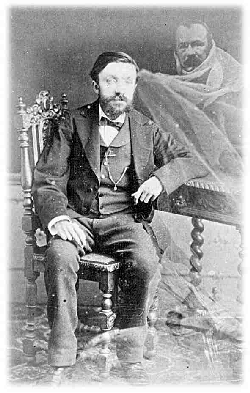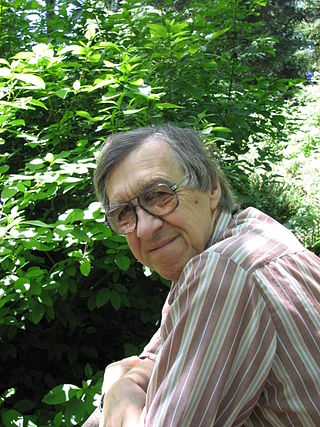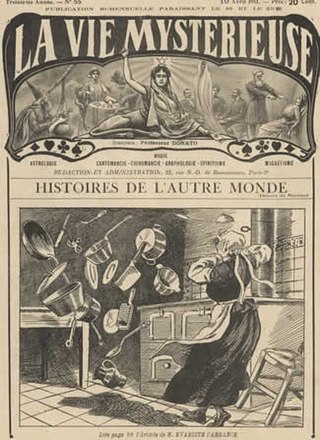Extrasensory perception (ESP), also known as a sixth sense, or cryptaesthesia, is a claimed paranormal ability pertaining to reception of information not gained through the recognized physical senses, but sensed with the mind. The term was adopted by Duke University botanist J. B. Rhine to denote psychic abilities such as intuition, telepathy, psychometry, clairvoyance, clairaudience, clairsentience, empathy and their trans-temporal operation as precognition or retrocognition.

Parapsychology is the study of alleged psychic phenomena and other paranormal claims, for example, those related to near-death experiences, synchronicity, apparitional experiences, etc. Criticized as being a pseudoscience, the majority of mainstream scientists reject it. Parapsychology has also been criticized by mainstream critics for claims by many of its practitioners that their studies are plausible despite a lack of convincing evidence after more than a century of research for the existence of any psychic phenomena.

Telepathy is the purported vicarious transmission of information from one person's mind to another's without using any known human sensory channels or physical interaction. The term was first coined in 1882 by the classical scholar Frederic W. H. Myers, a founder of the Society for Psychical Research (SPR), and has remained more popular than the earlier expression thought-transference.

A ganzfeld experiment is an assessment used by parapsychologists that they contend can test for extrasensory perception (ESP) or telepathy. In these experiments, a "sender" attempts to mentally transmit an image to a "receiver" who is in a state of sensory deprivation. The receiver is normally asked to choose between a limited number of options for what the transmission was supposed to be and parapsychologists who propose that such telepathy is possible argue that rates of success above the expectation from randomness are evidence for ESP. Consistent, independent replication of ganzfeld experiments has not been achieved, and, in spite of strenuous arguments by parapsychologists to the contrary, there is no validated evidence accepted by the wider scientific community for the existence of any parapsychological phenomena. Ongoing parapsychology research using ganzfeld experiments has been criticized by independent reviewers as having the hallmarks of pseudoscience.

An out-of-body experience is a phenomenon in which a person perceives the world as if from a location outside their physical body. An OBE is a form of autoscopy, although this term is more commonly used to refer to the pathological condition of seeing a second self, or doppelgänger.

Remote viewing (RV) is the practice of seeking impressions about a distant or unseen subject, purportedly sensing with the mind. A remote viewer is expected to give information about an object, event, person, or location hidden from physical view and separated at some distance. Physicists Russell Targ and Harold Puthoff, parapsychology researchers at Stanford Research Institute (SRI), are generally credited with coining the term "remote viewing" to distinguish it from the closely related concept of clairvoyance. According to Targ, the term was first suggested by Ingo Swann in December 1971 during an experiment at the American Society for Psychical Research in New York City.

In Spiritualism, paranormal literature and some religions, materialization is the creation or appearance of matter from unknown sources. The existence of materialization has not been confirmed by laboratory experiments. Numerous cases of fraudulent materialization demonstrations by mediums have been exposed.
Charles Henry Honorton was an American parapsychologist and was one of the leaders of a collegial group of researchers who were determined to apply established scientific research methods to the examination of what they called "anomalous information transfer" and other phenomena associated with the "mind/body problem"—the idea that mind might, at least in some respects, have a physical existence independent of the body.

Charles T. Tart is an American psychologist and parapsychologist known for his psychological work on the nature of consciousness, as one of the founders of the field of transpersonal psychology, and for his research in parapsychology.

Milbourne Christopher was a prominent American illusionist, magic historian, and author.
Ingo Douglass Swann was an American psychic, artist, and author, whose claims of clairvoyance were investigated as a part of the Central Intelligence Agency’s Stargate Project. Swann is credited as the creator of the term “Remote Viewing," a term which refers to the use of extrasensory perception to perceive distant persons, places, or events.

A near-birth experience is an alleged recollected event which occurred before or during one's own birth, or during the pregnancy, an alleged remembering of one's own pre-existence, or an alleged encounter with the unborn child experienced by relatives or close family friends. Under this usage, the term "near-birth experience" is analogous to the term "near-death experience."
Erlendur Haraldsson was a professor emeritus of psychology on the faculty of social science at the University of Iceland. He published in various psychology and psychiatry journals. In addition, he published parapsychology books and authored a number of papers for parapsychology journals.
Michael Anthony Thalbourne was an Australian psychologist who worked in the field of parapsychology. He was educated at the University of Adelaide and the University of Edinburgh. His books include: A glossary of terms used in parapsychology (2003), The common thread between ESP and PK (2004), and Parapsychology in the Twenty-First Century: Essays on the future of Psychical Research (2005).

Telekinesis is a purported psychic ability allowing an individual to influence a physical system without physical interaction. Experiments to prove the existence of telekinesis have historically been criticized for lack of proper controls and repeatability. There is no reliable evidence that telekinesis is a real phenomenon, and the topic is generally regarded as pseudoscience.

Extrasensory Perception is a 1934 book written by parapsychologist Joseph Banks Rhine, which discusses his research work at Duke University. Extrasensory perception is the ability to acquire information shielded from the senses, and the book was "of such a scope and of such promise as to revolutionize psychical research and to make its title literally a household phrase".

Deathbed phenomena refers to a range of paranormal experiences claimed by people who are dying. There are many examples of deathbed phenomena in both non-fiction and fictional literature, which suggests that these occurrences have been noted by cultures around the world for centuries, although scientific study of them is relatively recent. In scientific literature such experiences have been referred to as death-related sensory experiences (DRSE). Dying patients have reported to staff working in hospices they have experienced comforting visions.

Charles Edward Mark Hansel was a British psychologist most notable for his criticism of parapsychological studies.

Kathleen Mary Hervey Goldney (1894–1992) best known as K. M. Goldney was a British parapsychologist and writer.
Olof Jonsson (1918-1998) was a Swedish-American engineer and psychic.













